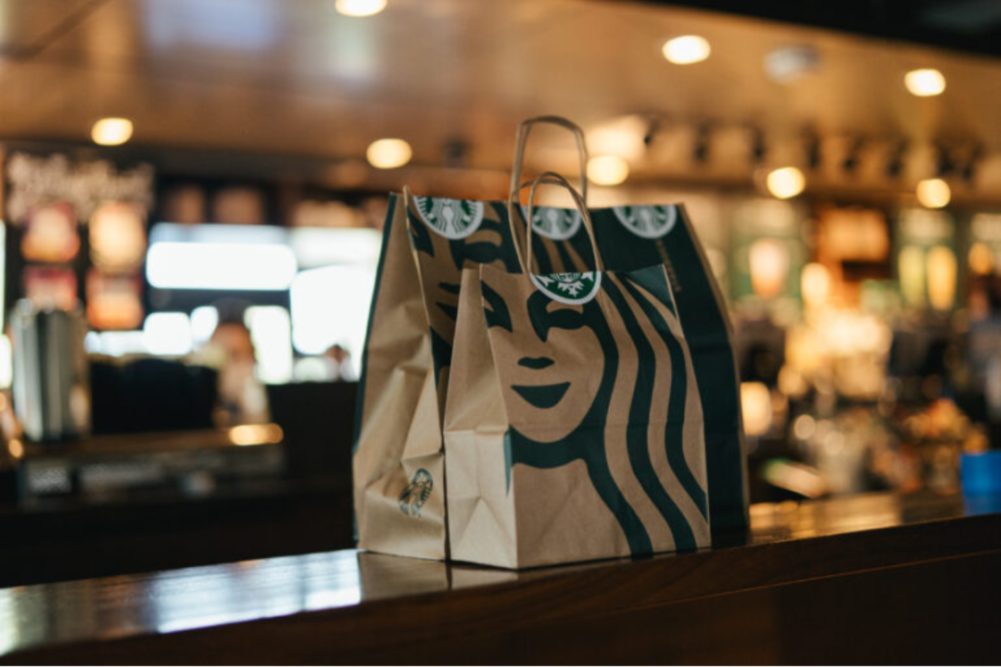SEATTLE — The strength and resilience of the Starbucks brand coupled with the connection, trust and loyalty the company has built with customers around the world “is resonating,” said Kevin R. Johnson, president and chief executive officer of Starbucks Corp.
Those attributes helped fuel performance throughout fiscal 2021 and have set the stage for additional growth in fiscal 2022.
Net income at Starbucks in the year ended Oct. 3 totaled $4.2 billion, equal to $3.54 per share on the common stock, up sharply from $928.3 million, or 79¢ per share, in fiscal 2020. Fiscal 2021 results included a gain of $864.5 million from the divestiture of certain operations.
Net revenues in fiscal 2021 increased 24% to $29.06 billion from $23.52 billion.
US comparable store sales increased 21% in fiscal 2021, driven by a 13% increase in average ticket and an 8% increase in comparable transactions.
“We made significant progress addressing supply chain issues and experienced an overall improvement in inventory availability as we moved through the quarter by increasing production at existing suppliers, onboarding new suppliers and strategically prioritizing key holiday and Q1 merchandise,” Mr. Johnson said. “While we made significant progress addressing supply chain challenges as fiscal 2021 progressed, we remain cautious and vigilant as we enter fiscal '22 given the dynamic nature of the situation.”
John W. Culver, group president of North America and chief operating officer, elaborated on Starbucks’ strategy addressing the supply chain challenges, noting the company has worked very closely to add new manufacturing and supply partners across critical categories.
“That is paying dividends for us, and we’re seeing inventory ease in those categories, i.e., oat milk, breakfast sandwiches, egg bites, etc.,” Mr. Culver said. “We're building throughput and production capacity. We have suppliers adding new lines so that they can increase their safety stock. We work with suppliers to invest in wage for their workers, and many of them have done so.
“And the last thing I would say that what we've done is we've really focused our production efforts on high-volume items. And some of those lower-volume items we pulled back on and deprioritized. So all that work and the actions that we've taken, we started early on as we began to see these challenges. We've addressed them. We're not out of the woods yet, but we feel very good about the path that we're on.”
Mr. Johnson said the US market is at a “unique inflection point.”
“Stakeholders and companies whose leaders correctly identify emerging trends, thoughtfully shape strategic action and invest in the future will be big winners over the long term. In the quarters ahead, Starbucks will continue to target investment in high-returning assets that we believe will accelerate our double-digit Growth at Scale model, driving long-term sustainable and profitable growth.”
He noted that a “rich pipeline of innovation” is expected to elevate the Starbucks experience in stores and drive in-store productivity gains. Innovation on tap includes Mastrena 2 espresso machines that more efficiently pull triple shots of espresso, as well as a Deep Brew artificial intelligence platform that has automated daily inventory management.

